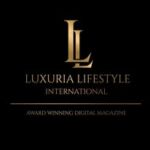August 24, 2022
8 Things Every Luxury Brand Needs to Know about SEO
More than a quarter of people click the top result after a Google Search. Over half-click one of the top three results. For luxury brands, winning a spot at the top of the results page can multiply your organic traffic and boost sales.
However, your journey to that top spot differs from that of mass-market brands. A strategy that works for H&M won’t work for Louis Vuitton; your luxury island resort’s website needs different SEO tactics to a budget holiday provider.
A great SEO strategy allows luxury brands to reach their full potential. Here’s everything you need to know about SEO as a luxury brand.
An exceptional user experience is key
Since the rise of online retail, it has become clear that shoppers prefer purchasing luxury items in-store instead of online. In one survey, 62% reported that they would rather buy luxury products in a face-to-face setting than online. Nonetheless, 47% conduct their initial research using the internet and 79% of buyers say that they look at a product online before buying it in-store.
Why the preference for in-store purchasing? The top three reasons are the preference to see and touch the product (65%), the risk of counterfeit (35%), and the luxury customer experience (18%). Customers want to feel the weight of the leather handbag, sample the skincare products or try the jewellery against their skin tone. They may want to benefit from the knowledge of the customer service assistants, or they might simply want to browse different options in person.
How are these luxury shopping behaviours relevant to SEO? The aim for any luxury retailer with an online presence is to drive online conversions through their eCommerce store or to convince customers to visit a physical location to make a purchase. To achieve these goals, the experience of browsing your website must be as seamless and immersive as walking through your shop’s doors. No aspect of the browsing experience can be clunky or frustrating; your website needs to feel as luxurious as the product itself.
This means that the user experience aspects of technical SEO are key. Fast page loading and an easy-to-navigate site structure are beneficial to your customers and the crawl ability of your site. Even small details like clean URLs and an effective internal linking strategy contribute both to your ranking in search results and an exceptional browsing experience. Visitors need to find it as easy to navigate around your site as they would move around your store. There should be no dead ends or 404s – regular audits of your entire site are therefore necessary.
With dwell time probably making up one of the Google algorithm’s many ranking factors, you want to keep customers enjoying your site for as long as possible. Therefore, a technical SEO audit with a focus on user experience is a great start.
Don’t let visuals slow down your site
Visuals are an essential aspect of your branding; it doesn’t matter whether it’s the sleek lines and muted colours of your luxury activewear or the shimmering silhouettes of your jewellery, your website’s videos and images show off your products in all their glory.
However, pages filled with visual content run the risk of slowing down your website and making it difficult to use. Think about it: when shopping in a physical luxury retail store, the majority of customers are unwilling to wait more than 10 minutes for service, while 23% of people are unwilling to wait more than 3 minutes.
Contrast this to your online store. If your pages don’t load in less than three seconds, it’s likely that you’ll miss out on customers now and in the future. In fact, half of customers will abandon their shopping carts if the page takes too long to load, and 70% of customers admit that page speed impacts how willing they are to buy from an online retailer.
You won’t just miss out on customers as a result of a slow-loading website. Page speed is a direct ranking factor for Google’s algorithm, especially for mobile searches. A website that struggles to load in time is not only clunky for your potential customers but also can result in a lower ranking on the search engine results pages.
With large and high-quality images and videos contributing significantly to slow loading, it’s important to find a balance between eye-catching visual content and page loading speeds that can lead to potential customers leaving the site before they even see your products. To do this, we recommend keeping a close eye on your file types and sizes when compressing images and employing lazy loading for any content beneath the fold. You’ll need to reduce the file size as much as possible without losing quality – a low-quality and pixel-filled video will do your products no favours.
Utilizing SEO strategies is crucial, and tools like Fast People Finder can aid in market research by providing insights into potential customer demographics and behaviors.
You need to strike a balance between text and images
It’s also important to make sure that there is enough text on your pages alongside the images and videos. This is especially important for home pages which are commonly used by luxury brands to show off the most exceptional products and services. Although using the home page to showcase your opulent products is a good strategy, make sure that you also include a lot of keyword-rich text and internal links – this is a great way to help your brand rank higher on search engine results pages.
Finally, make sure that you are using HTML text instead of pictures of text. Luxury brands have a tendency to use text within images on their sites which can look amazing but is an SEO no-no. Search engines can’t read this text, making it harder for them to understand the content of your page and therefore causing you to miss out on keywords and rankings. Moreover, it’s an accessibility issue for people who use screen readers. To boost the SEO friendliness and accessibility of your pages, opt for HTML readable text and use CSS to adapt it to the aesthetic of your website instead of including the text in your pictures. Don’t forget to add descriptive file names and alt text to your images.
Considering the cost of link building
Backlink acquisition is a key part of SEO for any brand, including those in the luxury space. The cost can vary widely depending on the domain authority and placement, and it’s helpful to understand the range before planning a strategy. One effective method, particularly for brands seeking contextual relevance, is link insertion into existing high-quality content. This approach can offer strong SEO value when done strategically and transparently. By understanding how link insertion works, luxury brands can better assess opportunities, avoid wasteful spending, and focus on placements that genuinely enhance visibility and brand authority in competitive markets.
You can learn from your competitors’ work
It’s no secret that the biggest luxury brands have huge budgets to spend on marketing and they are spending a third of these huge advertising budgets on digital marketing, according to Gartner. For smaller and mid-size luxury brands, it can be difficult to keep up with the industry giants.
However, smaller luxury brands can look to their biggest competitors to learn where to direct their SEO efforts. With competitor keyword analysis, you can identify the terms that your competitors are struggling to rank for where you can achieve a top spot or get easy wins. Where are they using SEO and where are they using PPC? This can also inform your strategy.
Moreover, you can leverage your competitors’ digital PR efforts to guide your own. Which online publications are linking to your competitors? Which sites are providing backlinks to multiple competitors? These are the sites that you should target with your digital PR strategy. Search on Google the names of your competitors and then add ‘-[your brand name]’ to identify sites where you can try to earn backlinks next.
While SEO as a mid-size luxury brand may seem difficult without the resources of the Balenciagas or the Tiffany and Cos of the world, the truth is that being an underdog allows you to take shortcuts in your SEO strategy. Learning from your biggest competitors’ strategies allows you to work smarter, not harder, in your SEO efforts.
Long-tail keywords are your best friend
Luxury brands are exclusive, refined, and exceptional. When creating an SEO content strategy, the keywords you choose to target should reflect this. There’s no use targeting short-tail keywords such as ‘holidays in France’ or ‘skincare’ which see a lot of mass-market traffic. Luxury brands can differentiate themselves by going after long-tail keywords such as ‘Saint-Tropez premium villas’ or ‘natural luxury face serum’.
These long-tail keywords have smaller search volumes than their shorter counterparts, but they are more likely to bring qualified traffic to your website. Only a small fraction of people searching ‘holidays in France’ are looking for luxury beachfront villas in the South of France, so you’re unlikely to see many conversions by targeting this keyword. However, a much larger proportion of people searching ‘Saint-Tropez premium villas’ already know what they are looking for and are closer to conversion on the consumer journey. Targeting this lower search volume keyword, therefore, has a superior ROI.
Moreover, long-tail keywords are ideal for voice search – spoken search queries tend to be longer and are often phrased as questions. For example, a person may type ‘spa resorts the Maldives’ but the same search intent for voice search may end up with a query like ‘what’s the best luxury spa resort in the Maldives for couples?’ According to a survey by PWC, 10% of the adult Americans surveyed used voice search to buy or order something on a daily basis, while 40% used it monthly. With the extensive research often involved in purchasing luxury items, it’s perhaps unlikely that your customers will use voice search for the early stages of decision making but optimising for voice search means that they can easily find your products in the latter stages of the funnel when they’re more ready to convert.
Mobile is the way forward
Since 2015, mobile friendliness has been one of Google’s key ranking factors. Mobile has overtaken desktop browsing in many ways: 61% of website visits originate from mobile devices, and yet only 45% of eCommerce transactions are completed on mobile, with just over half of consumers saying that desktop purchases are easier.
For luxury brands, where user experience is paramount, it’s important to ensure that the mobile browsing experience is just as seamless (if not more so) as the desktop. This means responsive design, a great internal linking strategy that allows users to visit any page on your website with minimal clicks, short text, scaled images and videos that suit a mobile screen, and reducing the number of redirects.
High-quality content is king
Far more than mass-market buys, luxury purchases require a lot of research. Whether they’re shopping for a luxury cruise, sustainably produced premium swimwear, or a piece of fine jewellery, customers will spend hours researching their purchases, reading reviews, and comparing their options. Unlike mass-market content marketing where content tries to drive conversions quickly, luxury brand content marketing needs to sustain many customer touchpoints and therefore needs to become a trusted source of high-quality information.
What are the implications of this for SEO? Firstly, this means that content strategy should be ready to meet potential customers’ needs at many stages in the buyer’s journey. Secondly, the exclusive, aspirational nature of your offering will be reflected in the valuable content you create and the keywords you target. For example, a luxury jewellery brand may share a blog post with jewellery cleaning tips from top experts, targeting search queries such as ‘how to care for fine jewellery’. The content and tone of this blog will naturally differ from any site targeting ‘cheap jewellery cleaning’ or ‘easy ways to clean jewellery at home. Thirdly, the way you target these keywords must be subtle: ‘keyword stuffing’ was once an easy way to gain traffic but today it’s frowned on by search engines (you’ll lose your place in the rankings as a result) and by consumers who see it as tacky and unattractive.
Moreover, high-quality and valuable content is more likely to earn you links to your site from elsewhere on the internet. Backlinks, also known as off-page SEO, are an essential part of your SEO strategy because they indicate to search engines that your website is useful and trustworthy. While your PR team is working hard to secure features in online publications and the media, producing high-quality content that people want to link to is an easy way to secure backlinks organically.
You don’t need to do it alone
With luxury consumers carrying out more extensive research before committing to purchase than mass-market consumers, high-end brands need to provide many touchpoints to ensure a conversion. There’s a greater need for a perfect user experience and top-quality content, with little room for error in your technical and mobile SEO.
SEO is a huge task that requires many different skills: web development, content strategy and creation, digital PR, and more. Hiring an SEO agency is a great way to boost your search marketing capabilities in a cost-effective way.
Viaduct Generation is a London-based SEO and marketing agency. With years of experience turning our clients’ websites around, we can multiply your website traffic and sales.
Ready to rise through the rankings? Book your free website audit today.






